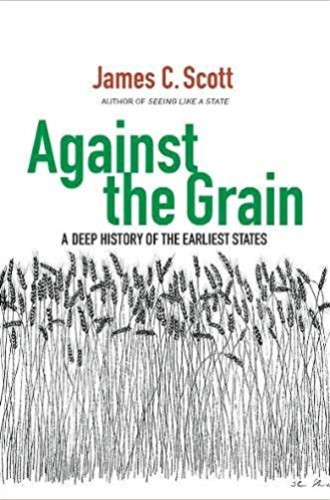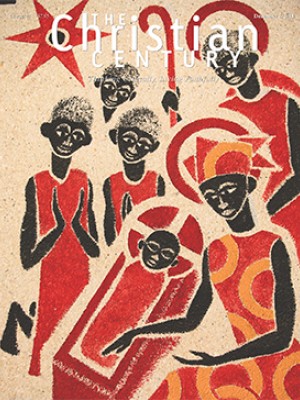Our narratives about nation-states
Is an organized state the pinnacle of progress? James Scott doesn’t think so.
Yale anthropologist James C. Scott has long considered how human communities survive and prosper outside of the coercive structures of the state. In his best-known books, Weapons of the Weak (1985) and Domination and the Arts of Resistance (1990), he analyzes the strategies used by modern-day subsistence communities to persist in the face of administrative pressure from above. In this book, Scott turns to the past, focusing on the emergence of the earliest states in Mesopotamia: Uruk, Ur, and Eridu.
The title phrase “against the grain” works on two levels at once. The grain of common opinion regards social evolution from informal communities to highly organized states as a natural development. According to what Scott calls “the narrative of progress,” this evolution is welcomed because the quality of life is so much better in an administered state, which is able to minimize risks and contingencies.
Read our latest issue or browse back issues.
Scott is dead set against the grain of that opinion. He contends that such a development is not automatic or natural, nor is existence in an administered state everywhere advantageous. Many people find a better life in a less organized economy.
The phrase “against the grain” also reflects a specific thesis about early economies: the earliest states depended completely on the production and control of wheat and barley. The economy of such grain states, made possible by systems of irrigation, was a single-crop enterprise that made administrative control easy and convenient. But Scott points to nonstate economies that went against the grain by resisting dependence on wheat and barley. These communities fostered a more diverse economy of hunting and gathering.
Both forms of resistance—to the earliest states’ preoccupation with grain and to our unexamined commitment to an evolutionary model of society—have serious implications beyond the scope of Scott’s historical investigation.
The first part of the book is a rather rambling account of how prestate or nonstate societies were formed and ordered. Such formation began with the mastery of fire, which is “the key to humankind’s growing sway over the natural world—a process of monopoly and trump card, worldwide.” Fire made it possible to accumulate resources through the domestication of plants and animals that produced substantial sedentary communities. With a plenitude of water, such communities prospered and needed no central administration.
The social organization of these communities permitted a combination of “hunting, foraging, pastoralism, and farming” practiced with a mobility and flexibility that resulted in prosperity.
Scott’s chronology picks up momentum when it describes the “accomplishment of the state,” which he judges as largely negative. He sees the state as a grain economy that claimed for itself “sacred grain” given by a powerful god or goddess to a chosen people. Its primary identity was that of a coercive tax collector.
The earliest states were founded in well-watered venues and enhanced by irrigation systems that maximized grain production, resulting in inordinate wealth and thus an urgent need to control the flow of the surplus. The accumulation of grain and manpower “maximized the possibilities of appropriation, stratification, and inequality.” These states were designed to produce great wealth generated by bonded laborers.
Scott marks several components of the state apparatus. The erection of walls was not primarily for protection, but rather to keep laborers inside. Writing emerged as an enterprise for record keeping, so that the state functioned by mystifying paperwork (or, in another context, tax forms). The coercive power of the state resulted in the enslavement of those regarded as essential to surplus production, the “convicts, indentured laborers, or a desperate proletariat” (read: indebted poor and immigrants). War became an additional tool for the coercive extraction of labor and money from the people.
Tracing the demise of these states, Scott argues that they were—in spite of their posturing ideology—immensely fragile. He shows how nonstate peoples benefited from the existence of these states even while keeping free from their coercion.
Scott’s analysis of early Mesopotamian societies challenges us to rethink how we chart progress. This challenge may illuminate eras that extend far beyond the material covered in the book.
For example, in the Old Testament tradition, Pharaoh’s Egypt was a coercive state that specialized in the production of surplus wealth through slave labor. The Israelites escaped to the wilderness, outside the reach of Pharaoh. Israel’s remembered narrative is that it departed an economy of predatory scarcity and found the wilderness to be a venue of abundance (manna) that permitted a neighborly social order.
In the New Testament, if Brigitte Kahl is right in her reading of Galatians, the early Christian community practiced a model of nonstate order that made the imperial magistrates very nervous.
Scott’s work merits close attention among Americans who have unwittingly embraced the tale of progress with our “amber waves of grain” and all that follows: control, extraction, debt, surplus, and consequent injustice. In this context, it is haunting to ponder the “follow me” that envisions an alternative path of life.
A version of this article appears in the print edition under the title “What good is a state?”







